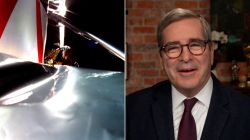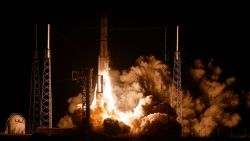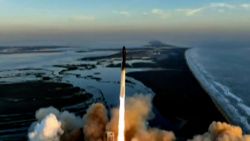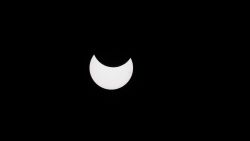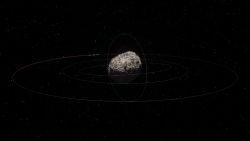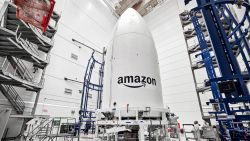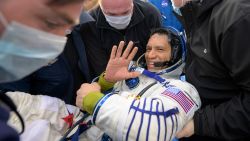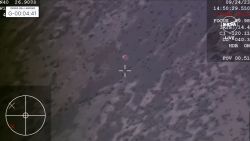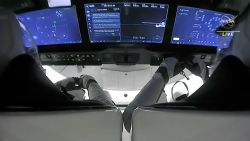Rough weather at sea toppled one of the three boosters used during the launch of SpaceX’s Falcon Heavy rocket last week.
The booster landed on a platform off the coast of Florida after the rocket’s successful launch on Thursday. But the hardware was knocked over during a storm while it was on its way back to shore this weekend, according to SpaceX.
“As conditions worsened with eight to ten foot swells, the booster began to shift and ultimately was unable to remain upright,” the company said Tuesday. “While we had hoped to bring the booster back intact, the safety of our team always takes precedence. We do not expect future missions to be impacted.”
The fall was a hiccup in an otherwise successful mission — the company’s first use of Falcon Heavy since its debut flight in February 2018. Falcon Heavy, which is the most powerful operational rocket in the world, was used to put a satellite from the Saudi Arabia-based TV and radio provider Arabsat into orbit.
SpaceX is the only rocket company that safely lands boosters after launching orbital missions. Its ability to recover boosters like the one that landed at sea this weekend is a key selling point, since the company says reusable hardware helps reduce launch costs.
CEO Elon Musk has said that making rockets work more like airplanes — which use expensive hardware on multiple flights — is the key to cheapening access to space. Boosters alone account for about 60% of the price of a rocket, Musk has said.
It’s not clear how much the booster was damaged during its fall, but significant harm could prove costly for SpaceX.
It’s not clear exactly how much SpaceX’s boosters cost or how much SpaceX spends refurbishing used hardware. But its rockets are notably cheap. Falcon Heavy has a sticker price of $90 million, for example, and is about one-third the price of its closest competitor, United Launch Alliance’s Delta IV Heavy.
When asked on Twitter whether the overturned Falcon Heavy booster would be a “total loss,” Musk said the booster’s engines “seem ok, pending inspection.”
SpaceX routinely reuses boosters of its workhorse launch vehicle, a single-column rocket called Falcon 9. The Falcon Heavy essentially uses three Falcon 9 boosters strapped together, creating new engineering challenges.
The three rocket cores are fixed together during liftoff and are designed to break apart after launch and guide themselves back to safe landings: The two side boosters conduct synchronized touchdowns on ground pads in Florida, while the center booster aims for an autonomous seaborne platform, called a droneship.
Both of the side boosters landed without a hitch last week, as they did after Falcon Heavy’s inaugural flight last year.
But the center booster has proven tricky for recovery efforts. After the first mission, it missed the droneship and splashed into the ocean.
Last Thursday, the booster landed safely on the droneship, nicknamed “Of Course I Still Love You.” And while SpaceX crew members tried to keep the booster steady during the trip home, that plan was aborted when the droneship encountered “rough sea conditions,” according to the company.
Musk tweeted Tuesday that a special robot designed to batten down rocket boosters while they taxi to shore was not able to latch on to the Falcon Heavy core.
The “attachment fixtures are different” for Falcon 9 boosters, compared to what is used for a modified Falcon Heavy core, Musk said. He added that new versions weren’t “ready in time” for the Arabsat mission.
Musk said in a separate tweet that the Falcon Heavy’s nose cone, or fairing, which protects the satellite during launch, was also safely recovered after it parachuted to a soft landing in the ocean. He said SpaceX could use the fairing again on an upcoming mission.



